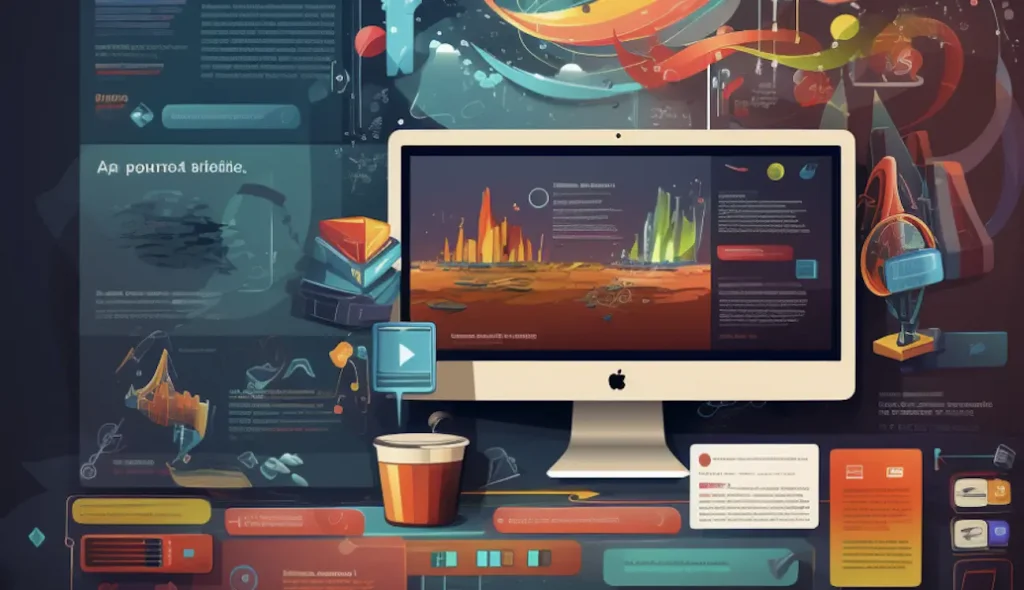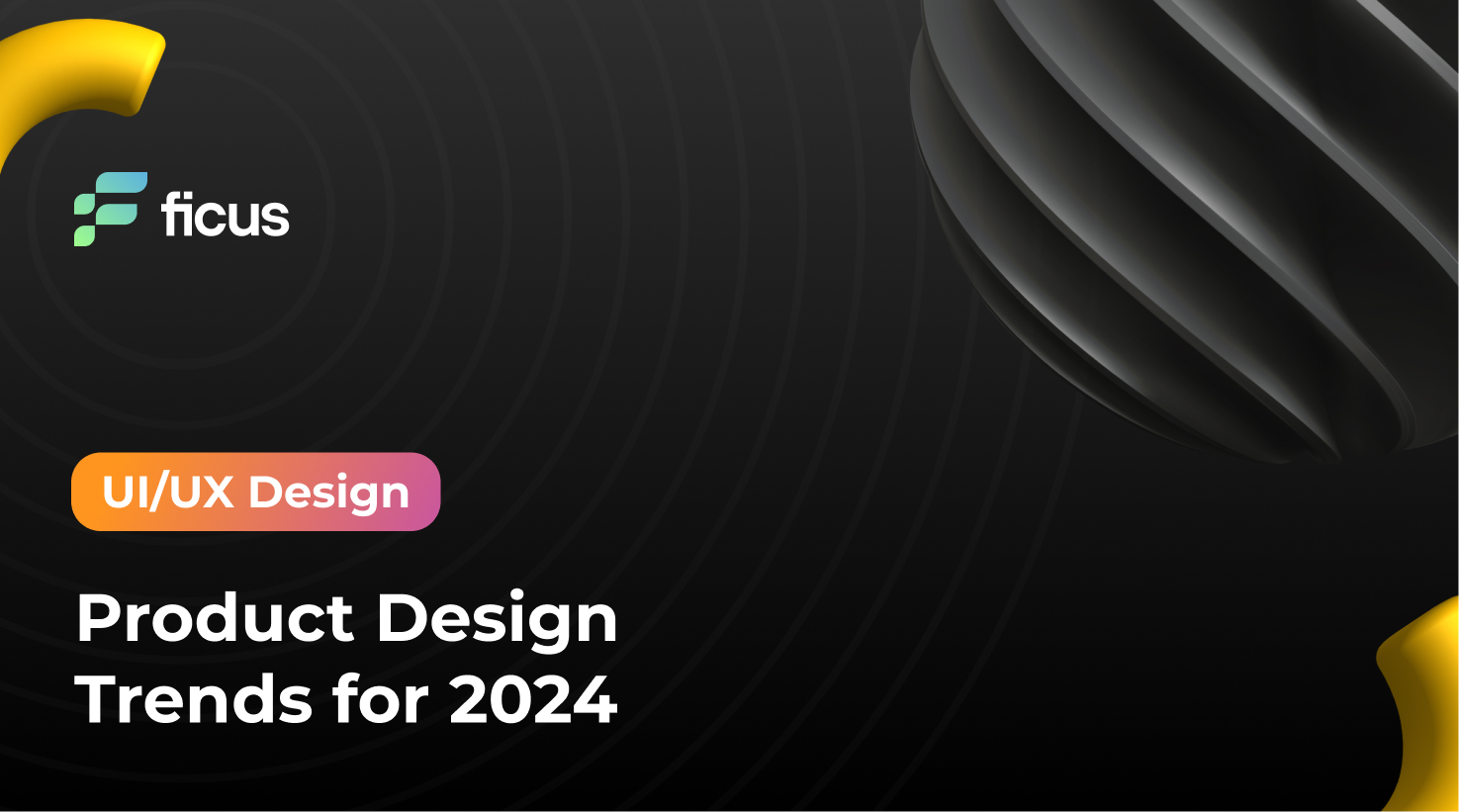To deliver exceptional user experiences, you must stay ahead of product design trends. As our world becomes more digitalized, the importance of digital product design in shaping the user experience is growing. A surge in technology, from augmented and virtual reality to artificial intelligence and machine learning, opens up new horizons for web and digital product design. In the fiercely competitive digital space, the first seven seconds are crucial – the period when your product design must captivate users. Products depend on tangible or digital design, where aesthetics and functionality remain timeless.
- 2024 product design trends emphasize sustainability and eco-friendliness.
- Minimalism and simplification are vital in product design.
- AR and VR technologies enhance user experiences and product demos.
What Is Product Design?
Product design is a dynamic process of conceptualizing, developing, and refining products that appeal to users and effectively meet their needs and market demands. Applied to everything from digital interfaces to tangible products, product design is based on a deep understanding of user pain points, desires, and market expectations. Whether you manage an in-house team or outsource product design, it’s important to prioritize keeping up with product design trends. Staying on top of product design trends ensures that the final product will not only meet but exceed user expectations, providing a positive user experience and maintaining competitiveness in the ever-changing landscape of product design trends.

Top Product Design Trends
Discover the cutting-edge product design trends of 2024 that promise to redefine the industry. From innovative typography to eco-friendly solutions, these product design trends set the stage for a transformative year. Experiment to create one-of-a-kind designs with unique inspiration, positioning yourself as a trendsetter shaping the future of industrial design.
Typography and Word-oriented Design
Words and typography are central to product design trends. Beyond the benefits of SEO, words play a key role in various design areas, from websites to mobile apps to product packaging. Integrating relevant keywords into these interfaces increases brand awareness and effectively grabs the audience’s attention. Typography, the cornerstone of Product Design Trends, sets the tone for the brand and conveys the message to the target audience. Use modern, futuristic, or geometric fonts to match the essence of 2024. Or, if you want to tap into tradition, look to vintage or Art Deco styles to complement your brand’s image.
Bold Colors
Color, a vital element in product design trends, significantly impacts brand recognition and appeal. Studies show that 80% of brand recognition and 93% of brand appeal depend on the effective use of color. In the dynamic landscape of product design trends in 2024, experts support the bright magenta color “viva magenta” as “the one.” However, for brands with a different identity, the palette is versatile – you can choose the allure of lavender, the boldness of bright red, the richness of emerald green, the calm of deep blue, or the warmth of beige. The strategic use of bright colors provides visibility and a powerful emotional connection with the audience.
Minimalism
A steadfast pillar in the ever-changing landscape of product design trends, minimalism remains a hallmark of sophistication. Embodied by industry giants such as Apple, known for its “extreme minimalism,” this design philosophy transcends trends, contributing to both popularity and premium pricing. Beyond aesthetics, minimalist design in Product Design Trends offers a clean, crisp, and uncluttered product appearance. Eliminating the unnecessary draws attention to the most important characteristics. In addition, minimalism promotes an easy user experience, making navigating digital and tangible products easier. In 2024, consider minimalism a design choice and the ideal of refined functionality and user-centered experience.
Dark Mode
As a key feature in product design trends, dark mode takes center stage, paying attention to user well-being and aligning with the product design trends of 2024. With more than 73% of young people facing health issues due to prolonged exposure to blue light, dark mode is becoming a key solution. This globally recognized display option reduces the negative effects of blue light and gives applications a modern aesthetic look. By offering an elegant look and feel and helping to save battery power on certain screens, dark mode is being called a technological leap forward. It is expected to become widespread in 2024 as websites and mobile apps increasingly integrate it into their UI/UX designs to improve user comfort and visual appeal.
Motion Design
As one of the cornerstones of today’s product design trends, motion design has overcome its historical challenges to become a key factor in user engagement and trends in product design. Recognizing its ability to improve the customer experience and deliver a positive user experience (UX), many IT support services companies are now prioritizing the integration of motion design to improve usability and intuitiveness. The effectiveness of motion design significantly impacts UX by influencing users’ emotional state and minimizing distractions during page loading. Motion design is expected to continue to play a leading role, organically intertwining with other trends such as micro-interaction, simplifying actions, minimizing errors, and ensuring an easy user interface (UI).
Good design is all about making other designers feel like idiots because that idea wasn’t theirs.
Frank Chimero
Thumb-Friendly Mobile Navigation
In a world where people check their mobile phones about 58 times daily, thumb-friendly mobile navigation is an integral part of product design trends. This smooth scrolling design evolution strategically places navigation bars, menus, and call-to-action buttons in the middle of the screen. Users can easily reach these elements with both thumbs, increasing accessibility for people with disabilities and providing comfort for users of phones with large screens. In addition to convenience, this product design trend considers the diverse ways users interact with mobile devices, adapting to on-the-go use and one-handed operation. Be future-proof by creating designs that prioritize accessibility and ergonomic simplicity.
Voice User Interface (VUI)
As technology gradually integrates into everyday life – in 2022, people will spend almost 5 hours a day with their mobile phones – product design trends are especially important for voice user interface (VUI). Revolutionizing interaction through speech recognition, VUI enables human-to-human communication on computers, phones, and smart devices. Its prevalence in products such as chatbots and voice assistants – Apple’s Siri, Amazon’s Alexa, Google’s Assistant, and Microsoft’s Cortana – underscores its growing popularity. With 71% of consumers preferring voice interaction over typing, VUI’s upward momentum will continue in 2024, changing the landscape of trends in product design with intuitive and accessible voice-enabled technology.
Virtual, Augmented, and Mixed Reality
The augmented and virtual reality market is projected to grow to $571.42 billion by 2025, and these cutting-edge technologies will become formidable pillars in the realm of product design trends. Virtual reality (VR) immerses users in artificial worlds through gadgets such as headsets or tactile gloves. Artificial Reality (AR) seamlessly integrates virtual objects into the real world using mobile devices or smart glasses. Mixed reality (MR) blurs the lines between virtual and real, offering endless possibilities. In industrial design, these technologies go beyond gaming, manifesting themselves in applications for virtual fashion, furniture shopping, and various immersive experiences. As trends in product design evolve, we can expect virtual, augmented, and mixed reality to redefine the boundaries of user interaction and engagement.
Accessibility and Inclusivity
Accessibility and inclusivity, while different, are integral and are becoming major trends in product design in creating a digital landscape for all users. With 61 million people with disabilities in the United States, the accessibility imperative is becoming apparent. Accessible design ensures that all customers, regardless of visual, motor, hearing, language, or cognitive impairments, can effectively use products – for example, transcripts for the hearing impaired. Inclusivity goes beyond the ability to accept diversity in terms of gender, age, sexual orientation, ethnicity, race, socio-cultural background, and language. An example is Apple’s diverse range of emojis. As product design trends evolve in 2024, an increasing focus will be on creating accessible and inclusive digital environments that will make technology truly inclusive for all.
Eco-Friendliness
Amidst the pressing challenges of climate change, sustainability is becoming a beacon in product design trends – a vital commitment to environmental preservation. As sustainability becomes a top priority, it is becoming a pervasive trend in both digital and tangible product design. In the digital realm, it is a powerful tool to raise awareness of the importance of green living. At the same time, in tangible products, the emphasis is shifting towards reducing the use of plastic and using recycled materials in production processes. This eco-oriented evolution of product design trends resonates with conscious consumers’ values and marks a collective step towards a more sustainable and harmonious future.
Do you need design development according to the latest trends?
Contact usWhy Is Following Product Design Trends Important?
Responding to customer needs: Trends in product design directly address customer needs and wants by adapting to changing market conditions. Companies that follow these trends create products that resonate and thrive in consumer demand.
Meet modern expectations: Rapid innovation in various fields shapes customer expectations for modern, efficient solutions. Product designers play a crucial role in fulfilling these evolving wishes by going beyond personal preferences to meet dynamic market demands.
Staying competitive: Despite being challenging due to constant change, following product design trends is a prerequisite for staying competitive. Keeping up with the times will keep products modern and fresh, avoiding obsolescence in a rapidly changing landscape.
Business benefits: Staying informed about the latest trends in product design offers a variety of business benefits:
- Profitability: Up-to-date products can be sold at higher prices, which increases profits.
- Increased sales: Innovative solutions aimed at solving customer problems increase sales efficiency.
- Strengthening the brand image: Keeping up with design trends helps to create a strong and modern brand image.
- Improved brand performance: Adapting to design trends improves overall brand performance.
- Cost-effectiveness: Using efficient and innovative design can lead to cost savings in production processes.
In essence, following the product design trends of 2024 is not just a strategic choice but a path to continued relevance, increased market share, and enhanced business success.
Final Thoughts
In summary, the Product Design Trends study reveals a dynamic landscape where innovation, user-centeredness, and technological advancements are combined to shape the future of digital experiences. From typography and vibrant colors to sustainability and virtual reality, the trends observed highlight the importance of adapting product design to meet changing societal needs and consumer expectations. To remain relevant, increase market share, and achieve overall economic success in the ever-changing field of product design, it is clear that organizations need to incorporate these design principles into their strategy as the industry undergoes these revolutionary changes.
By focusing on cutting-edge design solutions, Ficus Technologies can help companies easily integrate innovative features such as dark mode, motion design, and voice user interface into their digital products. By leveraging the expertise of Ficus Technologies, companies can not only stay ahead of product design trends but also improve their brand image, increase overall productivity, and achieve cost efficiencies in their production processes.
In 2024, designers will prioritize inclusivity by taking a holistic approach. They will consider users’ diverse needs, ensuring that products cater to people with different abilities, experiences, and preferences. Accessibility features such as transcription for the hearing impaired and thumb-friendly mobile navigation enhance usability for everyone. In addition, designers support diverse representations, as seen in Apple’s range of emoticons, promoting inclusivity across gender, age, and ethnicity. This commitment also extends to sustainability, recognizing a global audience concerned with sustainability. In this way, designers are integrating inclusivity not just as a design choice but as an essential element in creating a digital environment that is accessible and welcoming to all users.
Companies can keep abreast of new trends in product design by actively participating in industry events, conferences, and workshops. Communication with design professionals provides insight into new practices. Subscribing to design publications, blogs, and newsletters ensures a constant flow of information. Regular market research helps to understand consumer preferences. Collaborating with design agencies or professionals can offer a fresh perspective. Monitoring competitors’ design strategies is also valuable. Using social media platforms to follow industry influencers and participating in online design communities helps to ensure continuous learning. Proactive, adaptive thinking and integration of these various information channels allow companies to stay at the forefront of product design trends.









I’m a product design professional, and I found this essay educational. It correctly predicts the significant trends for 2023, putting a focus on sustainability, simplicity, and the function of AR/VR technology. Ficus Technologies is a dependable partner for companies seeking cutting-edge design solutions because of its assurance-inspiring product design experience.
This article offers valuable insights into the evolving landscape of product design for 2023. It highlights the importance of sustainability and minimalism, addressing the growing demand for eco-friendly products. Integrating AR and VR technologies is a forward-looking trend that enhances user experiences. Ficus Technologies’ commitment to helping businesses adapt to these trends adds credibility.
The product design trends for 2023 are covered in-depth in this article. It emphasizes the value of sustainability and design simplicity in keeping with customer desires. An intriguing development is the use of AR and VR technology. Ficus Technologies is a dependable option for corporations because of its admirable dedication to creating eco-friendly designs.